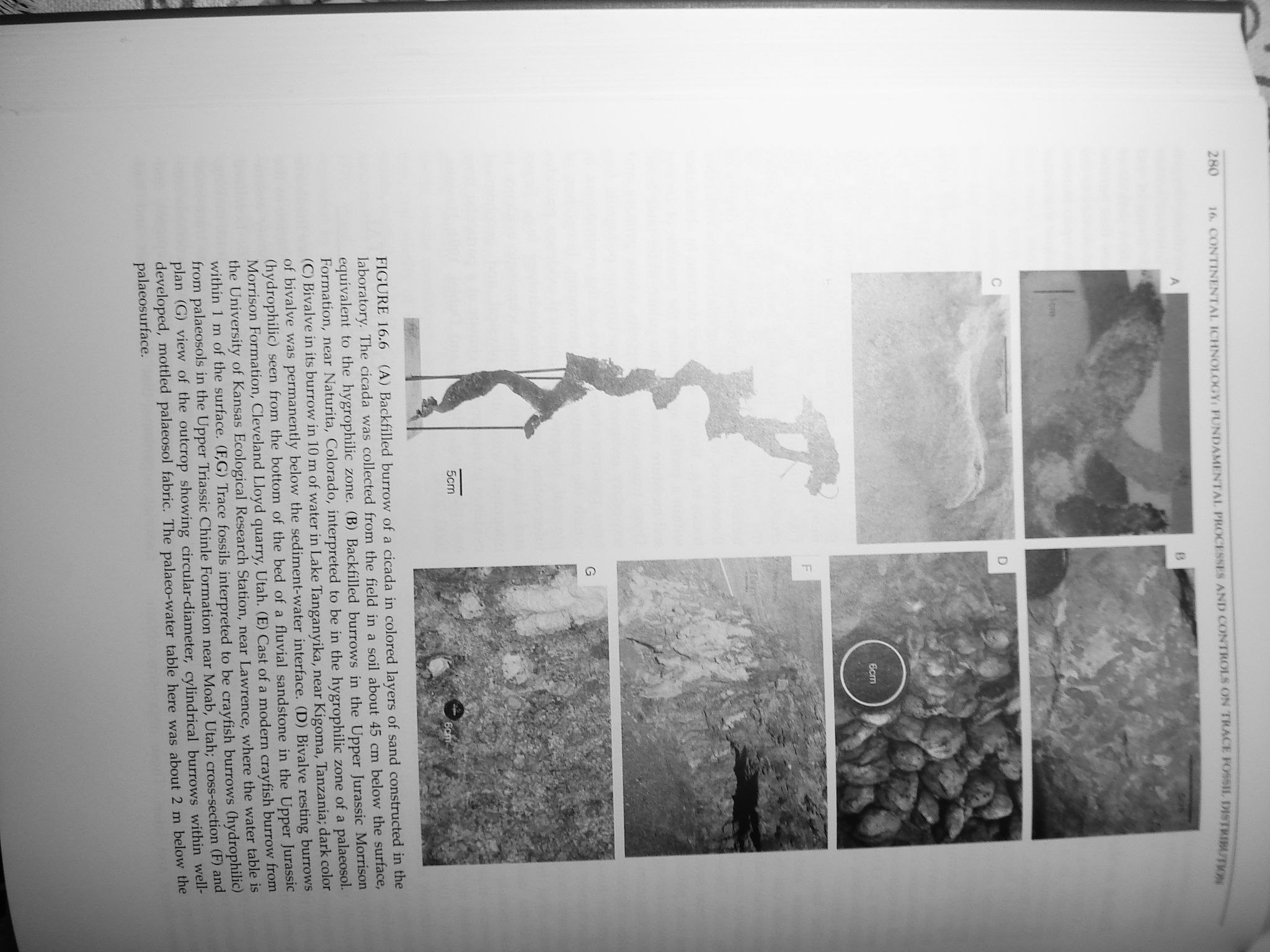dsc08796 (3)

280
'• 00NTININTAL ICHNIH.OOYi PUNDAMENTAL I'|UX-
»,Hł s AND CONTTUlt* < »N TRACI1. K*MI. IHtTMKTWU

FIGURĘ 16.6 (A) Backfilled burrow of a cicada in colored layers of sand constructed in the laboratory. The cicada was coUected from the field in a soil about 45 cm below the surface, equivalent to the hygrophilic zonę. (B) Backfilled burrows in the Upper Jurassic Morrison Formation, near Naturita, Colorado, interpreted to be in the hygrophilic zonę of a palaeosoL (C) Bivalve in its burrow in 10 m of water in Lakę Tanganyika, near Kigoma, Tanzania; dark color of bivalve was permanently below the sediment-water interface. (D) Bivalve resting burrows (hydrophilic) seen from the bottom of the bed of a fluvial sandstone in the Upper Jurassic Morrison Formation, Cleveland Lloyd quarry, Utah. (E) Cast of a modem crayfish burrow from the University of Kansas Ecological Research Station, near Lawrence, where the water table is within 1 m of the surface. (F,G) Tracę fossils interpreted to be crayfish burrows (hydrophilic) from palaeosols in the Upper Triassic Chinle Formation near Moab, Utah; cross-section (F) and plan (G) view of the outcrop showing circular-diameter, cylindrical burrows within well-developed, mottled palaeosol fabric. The palaeo-water table here was about 2 m below the palaeosurface.
Wyszukiwarka
Podobne podstrony:
dsc08798 (3) 282 16. CONTINENTAL 1CIINOLOGY: PUNDAMENTAL PROCESSES AND CONTROLS ON TRACĘ FOSSIL DIST
skanuj0136 (12) 280 1993 Chłopiec i jego bohater (The Boy and His Hero) 1994
280 RACF43. 2004. 164. Villa-vicus - (voir mes notes n° 1990, 58 et 2000, 125). On vient de le dire
m?ł*nowA. >.33 hl*rnKv*. 2} tPikiOL, t łlLt>C*Uoc) ~> Mi. iftittCN__ O-LiuJA.l.^-u
str184�01 Hl!!!! lii[......mil Iiiiillliiiiiilllliiili; llllilliiirtiiiiiilliiillii i mi olii, i i •
80860 skanuj0136 (12) 280 1993 Chłopiec i jego bohater (The Boy and His Hero) 1994
dsc08784 (3) 272 16. CONTINliNTAI. K IINOI.OOYi RJNDAMIINTAI, PH0OUŚBHH ANI) ( ON
skanuj0010 Model 4Pomarańczowy sweter z ażurowym wzorem Rozmiar: 36 Materiały: 280 g pomarańczowej w
skanuj0011 (280) Wszyscy autorzy podkreślają tępotę tych osobników. Naocznym obserwatorom trudno był
więcej podobnych podstron